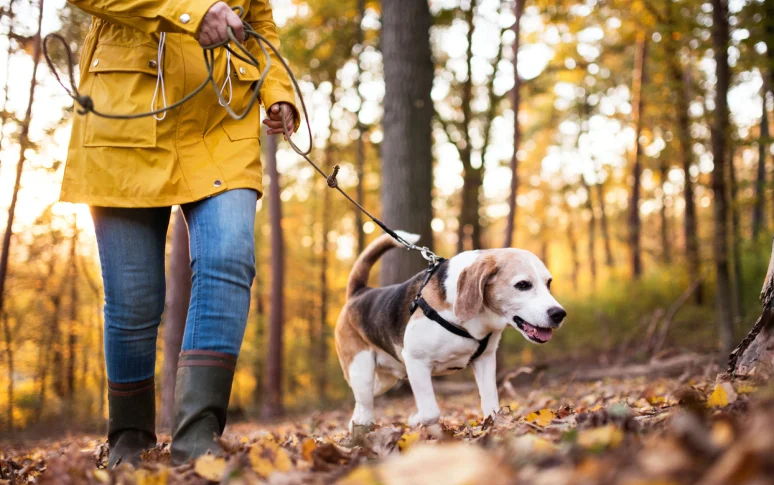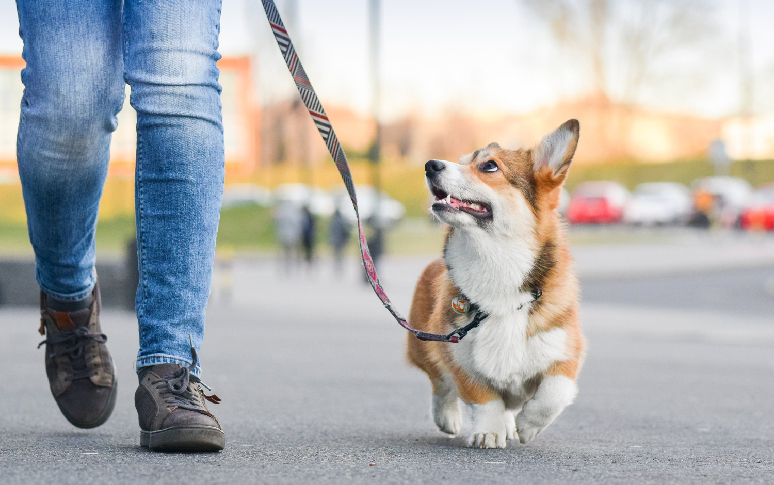1. Understand The Importance Of Dog Walks
Many dog owners would walk their dogs, but a significant number fail to understand the importance of walking their dogs. Walks are not just about exercise – they're about enrichment. They provide your dog with the opportunity to explore their environment, which is vital for their mental well-being. Walks can also help reduce behavioral problems, such as excessive barking or chewing, which may be symptoms of boredom or pent-up energy.

2. Factors Influencing Walk Duration And Frequency
Several factors influence how long and how often you should walk your dog:
- Age: Puppies have a lot of energy and may require several short walks, and playtime each day. Older dogs, on the other hand, may not have as much energy and might find long walks challenging. For them, shorter, more frequent walks might be more beneficial.
- Breed: Some breeds have higher energy levels and need longer, more strenuous walks. For instance, working breeds such as Border Collies or Labrador Retrievers will require more exercise than lap dogs like Bulldogs or Bichon Frises.
- Health: If your dog has a health condition, it may affect how much exercise they can handle. Dogs with heart conditions, for example, might require shorter, more leisurely walks. Always consult with your vet about the most appropriate exercise regimen for your dog based on their health.

3. General Guidelines For Dog Walks
While every dog is unique, and their walking needs may vary, some general guidelines can help you plan your dog's exercise routine:
- Puppies: They usually have a lot of energy and need several short walks, along with playtime each day.
- Adult dogs: They, particularly active breeds, require more than an hour of exercise each day. This can be split between two walks, one in the morning and one in the evening, with a few short bathroom breaks in between.
- Older dogs: They still need to go for walks – just shorter ones. Even a ten-minute stroll around the block can make a world of difference for your senior dog.

4. Determine The Best Time To Walk Your Dog
The best time to walk your dog is typically in the morning and the evening. In the morning, the temperatures are cooler, and it gives your dog a chance to relieve themselves after a long night. Evening walks are perfect for burning off any remaining energy from the day and preparing your dog for a good night's sleep.
During the hotter months, it's especially important to walk your dog during the cooler parts of the day (early morning and late evening) to prevent overheating or burning their paws on hot pavement.

5. Create A Walking Schedule
Creating a consistent walking schedule can help your dog know what to expect and can aid in preventing behavioral issues related to anxiety or pent-up energy. Here's a sample walking schedule for an adult, active-breed dog:
- Morning Walk (30 minutes to 1 hour): This walk should occur before breakfast and can be a longer, more active walk. This is a great time for your dog to burn off energy and start their day off right.
- Midday Break (15-30 minutes): If possible, a short midday break can be beneficial, especially for younger or more active dogs. This doesn't have to be a full walk – just a quick trip outside for a bathroom break and a chance to stretch their legs.
- Evening Walk (30 minutes to 1 hour): An evening walk can help your dog burn off any remaining energy from the day. This is also a good opportunity for training and socialization, as there may be more people and dogs out and about.

6. Make The Most Of Your Walks
Remember, walks are not just about physical exercise – they're also an opportunity for mental stimulation and training. Here are a few tips to get the most out of your walks:
- Change up your route: Walking the same route every day can get boring for both you and your dog. Try changing up your route or exploring a new park to give your dog new smells and sights to explore.
- Use walks for training: Walks are a great opportunity to work on leash training and basic commands. Bringing treats along and rewarding your dog for good behavior can make walks a productive training time.
- Let your dog sniff: Sniffing is a major source of mental stimulation for dogs. Allow your dog some time to sniff around (as long as it's safe to do so).
- Meet and greet: If your dog is friendly with other dogs, walks can be a great socialization opportunity. Just make sure to ask the other dog's owner before allowing your dog to approach.

Was this page helpful? Give us a thumbs up!












